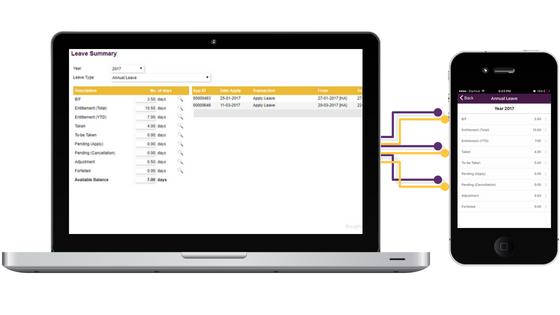The phenomenon that “Everything is connected“, does not only exist in the world of Dirk Gently. In today’s digitised world, it is virtually impossible for nothing to be connected to something else… .. . for better or worst, depending on how you look at it.
Perhaps one of the greatest difficulty that businesses encounter these days, is having to be flexible and adapt in a dynamic and extremely volatile business environment. It’s not an easy feat to maintain a business that can identify and capitalize on opportunities that come by (and go fast), whilst at the same time, navigate their way around and respond effectively to the many risks and challenges.
These days, business success is seemingly defined as the ability to: 1. Digitize, 2. Decentralize, 3. Secure and 4. Incentivize.
Is it even possible to inculcate this sort of agility into the business’ DNA?
Possibility wise- yes. Practicality wise- it will take a lot of work and planning, and it can start with having in place a strong backbone mechanism that involves clear articulation of standards and protocols of the business to its employees and customers. This is where having an effective HR infrastructure comes into play.
What is HRMS?
A Human Resource Management System (HRMS) is an integrated system for managing employee data. It is an “all in one” application comprising key HR operational functions which generally include:
- Leave Management;
- Claim(/Expense) Management;
- Employee Scheduling;
- Attendance Management;
- Personnel Management;
- Employee Self-service;
- Applicant Tracking;
- Performance(/Appraisal) Management;
- Benefits Management
….and the list goes on.
Why Companies Need HRMS?
Most businesses already have an offline HRMS in place, so why bother changing something that isn’t broken anyway. Here’s a brief reality check:
- The workforce is currently experiencing a shift towards a gig economy, with more and more jobseekers looking for contract-based( and relatively short-term) jobs over the years to come. It can easily be a messy task managing a diverse set of employees with a multitude of entitlements and requirements;
- The work ideals of every generation is different and ever-changing. However a consistent trend derived from various workforce surveys over the past year, is that the new wave of job seekers desire flexibility and control over their careers. Thus it is imperative that businesses effectively engage with employees to understand the connection between development, engagement and success.
For smaller businesses, a HRMS may not seem like an intuitively handy tool for your business. But it would be quite wrong to think that. A HRMS is in fact equally, or if not more useful in Small Medium Enterprises(SMEs) than Multi National Corporations(MNCs) due to its ‘all in one‘ approach in managing its people operations. We briefly list down several key benefits that a HRMS can bring about for any business:
1. Consolidation of all HR-related documentation
Let’s say you’ve got at least a dozen people working for you, and if you are relying solely on a paper-based system to keep track of basic employee information, this can easily turn into an administrative nightmare. You would more often than not, end up creating silos of information when relying on spreadsheets and documents to keep track of employee data. This is especially so if all the key existing HR functions of your business are completely detached from each other and are separately handled by individual employees.
2. Opportunity for Data Analytics
Collecting data opens up analytical opportunities that will grant you the ability to visualize and make sense of quantitative results and assist you in making informed decisions. In fact a recent research conducted from Bersin by Deloitte found that companies which incorporated high levels of people analytics in their workforce operations were able to generate “an 82% higher three-year average profits” over those who did not.
If you are actively able to collect the data, you can scrutinize it and use that analysis to make better informed decisions pertaining to workforce strategies. The effort required in getting the same insight using a paper-based system simply makes this type of analysis unfeasible and possibly inaccurate.
3. Achieve Insightful Management Reporting
With the amount of data that comes through the HR department these days, it’s almost impossible for any person, or even a group of people, to process everything. This means valuable information is constantly being overlooked or misplaced.
The beauty of working with a HRMS is that you don’t have to rely on your own human limitations. Data is synthesized and analyzed in powerful ways according to your business’ needs, that allow you to instantly obtain more accurate insights and make strategic decisions thereon.
4. Enhances Relationship between HR and Employees
In a recent survey conducted by Universum, having a “friendly working environment’ was unanimously selected across diverse professions, as the top reason that millennials choose to stay at their workplace.
A good starting point could be improving the way information and services are delivered to employees — in short, modifying HR service delivery. In the Sierra Cedar “2017-2018 HR Systems Survey” report, it states that service delivery improvements remain one of the top 10 HR technology initiatives. HR service delivery can improve the employee experience in many ways, such as helping employees to be more effective at work by enabling them to take care of 60-80% of their HR business by themselves and avoiding cases of miscommunication as much as possible.
5. Contributes to Quick and Efficient Decision Making
Do you ever feel annoyed when you are constantly bombarded with requests from employees like this:
- How many Annual Leave Days do I have left for the year?
- I want to plan my holiday, what is the block-off Leave Period for our Department this year?
- Have my Leave/Claim applications been approved?
The answer to is to distribute control in such a way that decisions can be made independently and fast, whilst at the same time ensuring that HR policies are clearly fixed in place without compromise.
Take Leave Applications for example, instead of HR or Department Managers taking charge to regularly monitor and update Leave Calendars whenever they receive information of leave applications or cancellations from employees via email or offline(which happens very often!), why not allow employees to take ownership for that?
Having a HRMS shifts this responsibility to the employee, who can simply log on to the system to see if they have enough vacation time, view leave dates of colleagues, research if the dates they want off are available, and submit their Leave requests via their own smartphone, tablet or laptop.
The modern workforce now wants the ability to figure out what has changed in their payslip, checking if their leave has been approved while waiting for their bus ride home. It’s all about being able to serve the real-time needs of employees, on the go.
6. Reinforces Transparency
Keeping up with corporate policies and procedures that are constantly changing, can be mentally taxing for employees. With automatic updates of corporate policies on a centralized portal, this ensures all employees have ease of access to the latest information on what’s happening with the company and brace themselves for future developments.
In addition, analysis obtained via the HRMS may be shared with employees to keep them in sync with corporate goals. For example, when integrated with a time and attendance system, a HRMS can be used to improve timekeeping and to keep employees aware of the impact this has on the business.
That sounds great, I want to start right now.
Before getting right into it, businesses must first understand that a HRMS is meant to be considered as a long-term investment, whereby the results have to be accumulated overtime for one to actually reap the benefits. So don’t expect to obtain immense insight on your workforce right away.
Nonetheless, now is a great time to begin about implementing a HRMS in your HR operations as digitization has increasingly become a necessity in our lives today. It’s important to sort out what your company goals are, realize what applications in a HRMS that is necessary for your business and plan out a feasible timeline that involves employees getting on board to reap the full benefits that a HRMS has to offer.
 Home
Home






